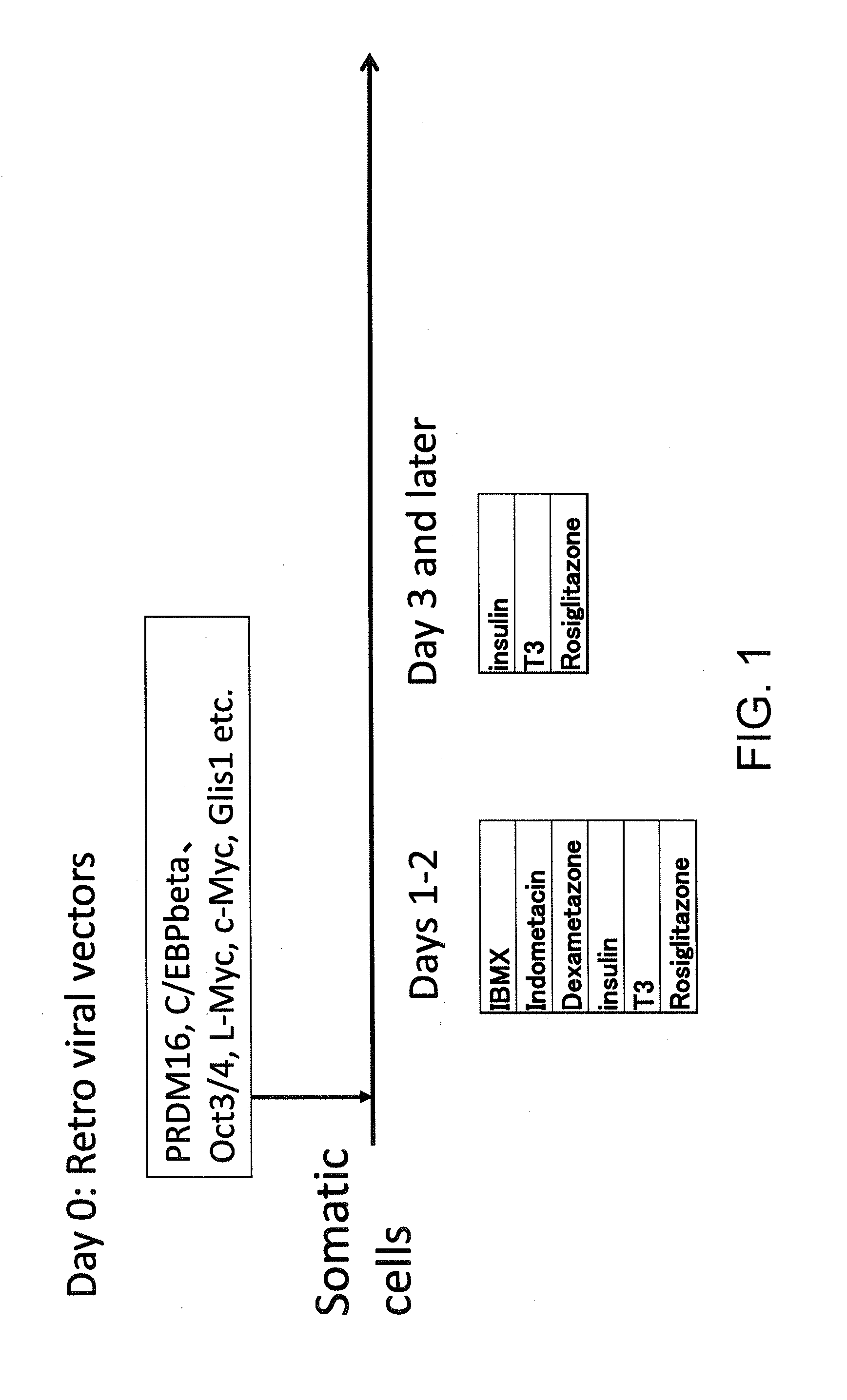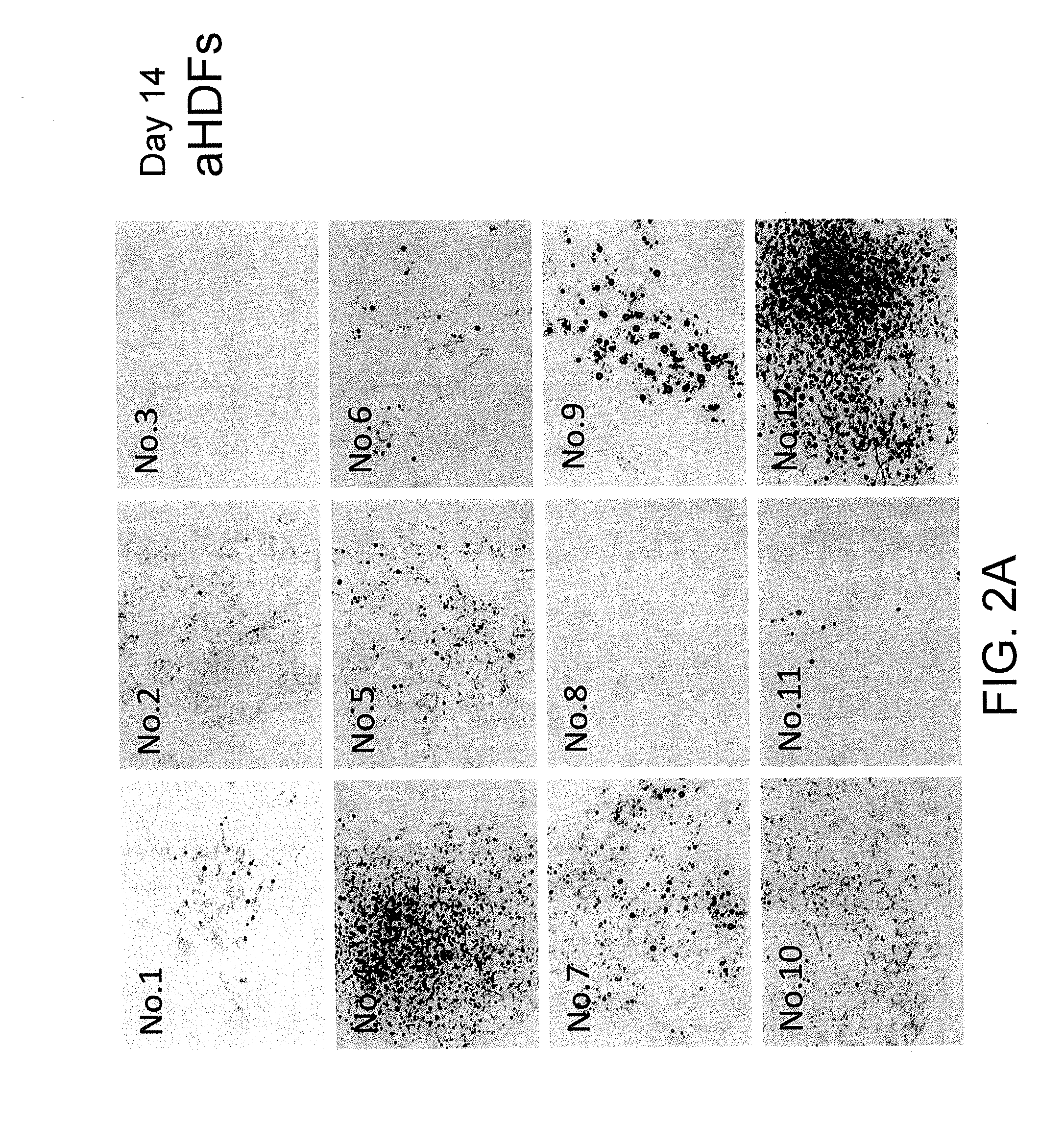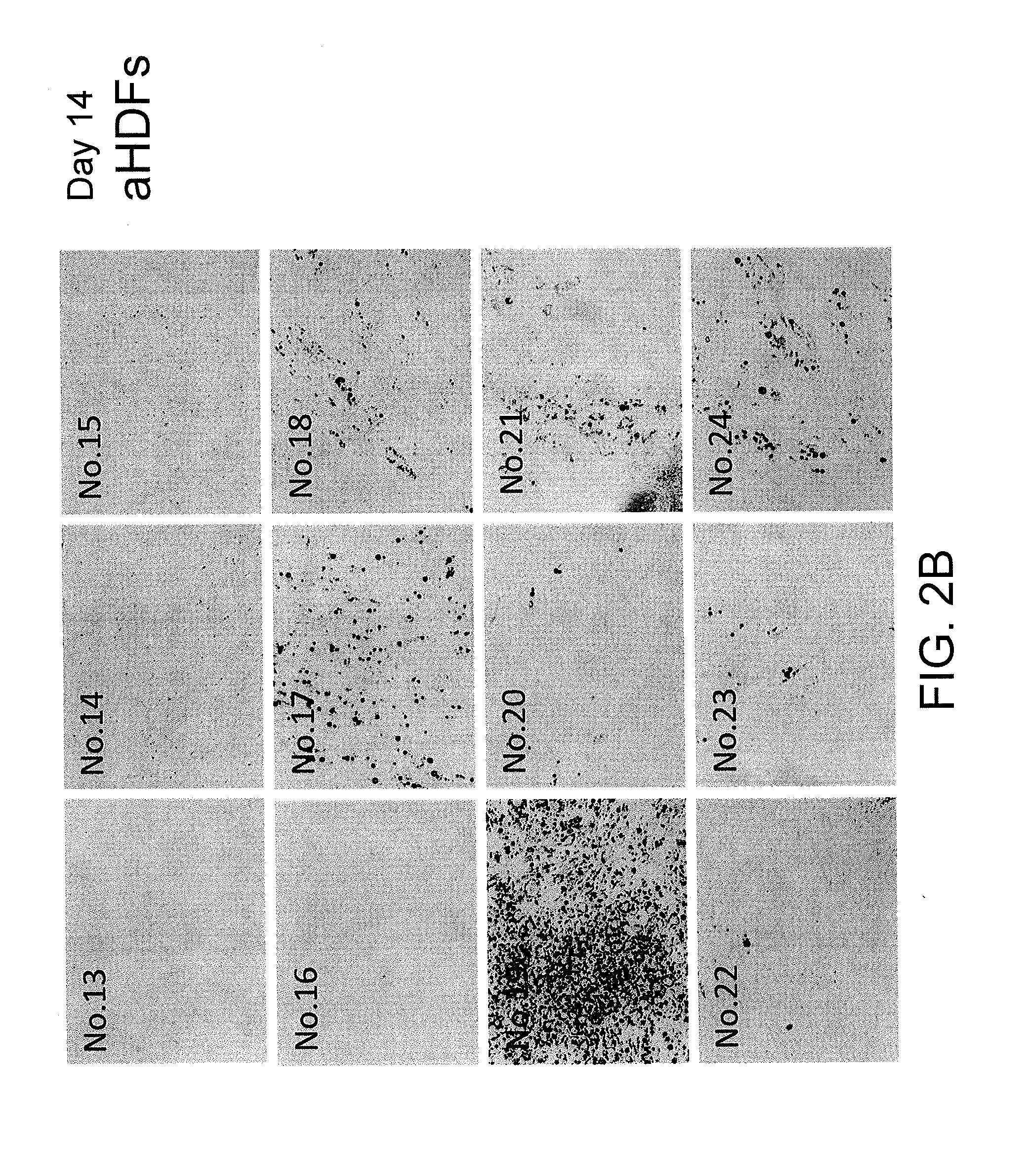Brown fat cells and method for preparing same
- Summary
- Abstract
- Description
- Claims
- Application Information
AI Technical Summary
Benefits of technology
Problems solved by technology
Method used
Image
Examples
example 1
Scheme of Some Experiments (FIG. 1)
[0096]The cDNA coding sequences of various genes such as C / EBPβ were incorporated into pMXs-puro retroviral vector plasmids using a Gene art system. Plat GP packaging cells were suspended in 1% NEAA 10% FBS DMEM (ordinary medium) containing 100 U / mL penicillin and 100 μg / ml streptomycin, and plated in a gelatin-coated 10 cm culture dish at a concentration of 5×106 cells / dish (day −3). After culturing for 24 hours, the pMXs vectors containing various genes were introduced in various combinations in the following proportion together with pCMV VSV vectors, using X-tremeGENE 9. More specifically, a mixture of 5 transgenes, 2.5 μg pCMV-VSV, 500 μl Opti-MEM, and 22.5 μl X-tremeGENE 9 was added to 10 cm dish containing 10 ml of medium (day −2). After 24 hours, the medium was replaced with antibiotic-free ordinary medium (day −1). On the same day (day −1), normal human dermal fibroblast line aHDFs or human adipose-derived stem cells ADSCs were plated on cu...
example 2
Conversion from Normal Human Dermal Fibroblasts into Brown Adipocytes, Images of Oil Red O Staining (FIG. 2)
[0097]Normal human dermal fibroblasts aHDFs were cultured in 12-well plates, and an experiment was performed as shown in FIG. 1. On day 14, the culture medium was removed by suction from each well, and the cells were washed with PBS once and then fixed with 60% isopropanol. An Oil Red O staining solution was added, and the plates were allowed to stand at 37° C. for 15 minutes (the Oil Red O staining solution was prepared as follows: 0.24 g of an Oil Red O powder was dissolved in 30 mL of 99.7% isopropanol, 20 mL of distilled water was added thereto, the resulting mixture was allowed to stand at room temperature for 30 minutes and filtered using a filter paper, and the obtained solution was used as an Oil Red O staining solution). The cells were washed with 60% isopropanol once, and then washed with pure water three times. FIGS. 2A-F show the images of the plates. In each well ...
example 3
Conversion from Normal Human Dermal Fibroblasts into Brown Adipocytes, Semi-Quantitation and Quantitation of Oil Red O Staining (FIG. 3)
[0098]To semi-quantify the Oil Red O staining in the same experiment as that in FIG. 2, two evaluators independently observed the plates with a stereoscopic microscope to evaluate the Oil Red O staining on a 4-point scale (+++, ++, +, − in descending order of Oil Red O staining strength). The table at the bottom of FIG. 3 shows the results. In the column of each gene in the table at the bottom of FIG. 3, “1” means that the cells were infected with a retroviral vector containing the gene, whereas a blank means that the cells were not infected with a retroviral vector containing the gene.
[0099]To quantify lipid content in the same experiment as that in FIG. 2, the distilled water was removed from each well after taking images, and 300 μl of 100% isopropanol was added to prepare extracts. 250 μl of each extract was transferred to a 96-well plate. The a...
PUM
 Login to View More
Login to View More Abstract
Description
Claims
Application Information
 Login to View More
Login to View More - R&D
- Intellectual Property
- Life Sciences
- Materials
- Tech Scout
- Unparalleled Data Quality
- Higher Quality Content
- 60% Fewer Hallucinations
Browse by: Latest US Patents, China's latest patents, Technical Efficacy Thesaurus, Application Domain, Technology Topic, Popular Technical Reports.
© 2025 PatSnap. All rights reserved.Legal|Privacy policy|Modern Slavery Act Transparency Statement|Sitemap|About US| Contact US: help@patsnap.com



